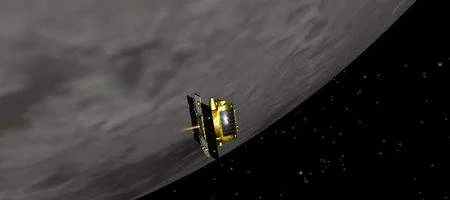NASA’s two GRAIL probes have now successfully been placed in orbit around the moon.

After a planned main engine burn, GRAIL-B achieved lunar orbit at 2:43 pm PST on New Year’s Day, following a similar manoeuvre by GRAIL-A at 2 pm PST the day before.
“NASA greets the new year with a new mission of exploration,” says NASA administrator Charles Bolden.
“The twin GRAIL spacecraft will vastly expand our knowledge of our moon and the evolution of our own planet. We begin this year reminding people around the world that NASA does big, bold things in order to reach for new heights and reveal the unknown.”
GRAIL-B is now in a near-polar, elliptical orbit with an orbital period of around 11.5 hours. Over the next few weeks, the GRAIL team will carry out several more burns with each spacecraft to cut their orbital period to just under two hours.
By March, at the start of the science phase of the mission, the two spaceships will be in a near-polar, near-circular orbit about 34 miles above the moon’s surface.
The plan is for the two spacecraft to transmit radio signals precisely defining the distance between them. As they fly over areas of greater and lesser gravity caused by mountains, craters and masses hidden beneath the surface, the distance between the two spacecraft will change slightly – and this information will be translated into a high-resolution map of the moon’s gravitational field.
Not only will this help scientists understand what goes on below the lunar surface, it should also cast light on how Earth and the solar system’s other rocky planets evolved.






